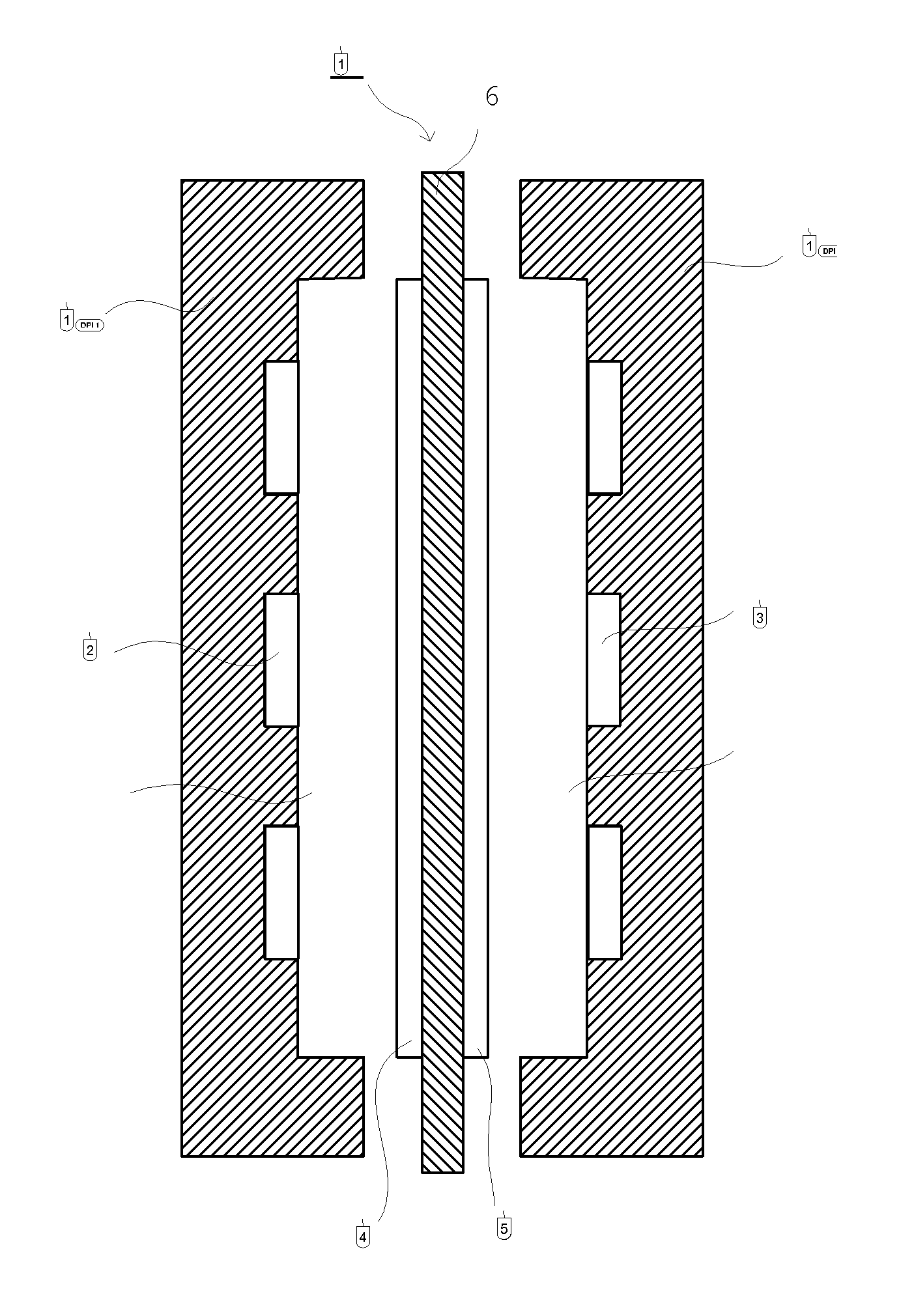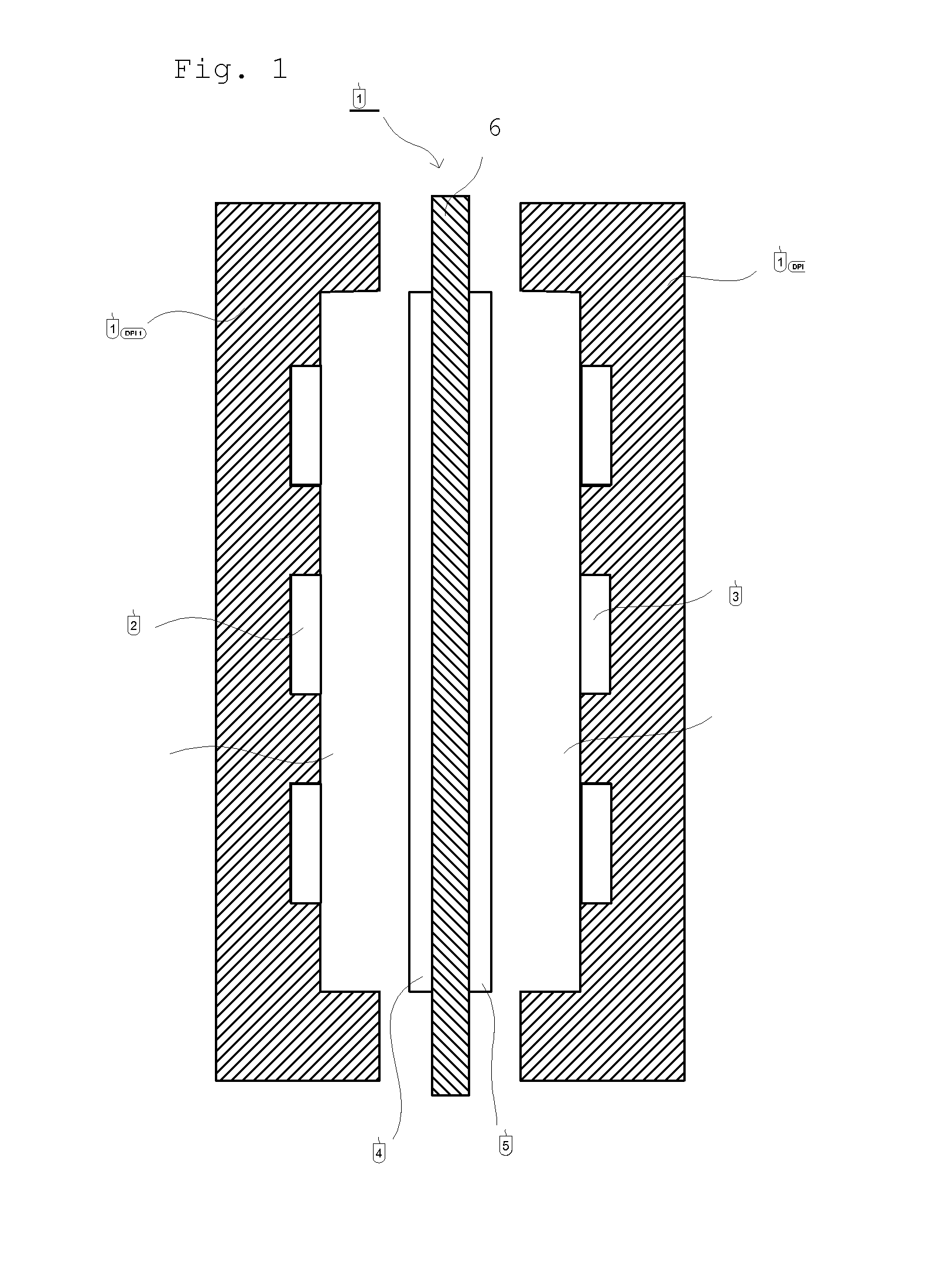Separation membrane for direct liquid fuel cell and method for producing the same
a liquid fuel cell and membrane technology, applied in the field of membranes for direct liquid fuel cells, can solve the problems of reducing limiting the reduction of the cost required for fuel cell production, and the inability to reduce the electric resistance of the membrane by thinning, so as to increase the transfer speed of hydroxide ions, increase the water content of the membrane, and the effect of increasing the water conten
- Summary
- Abstract
- Description
- Claims
- Application Information
AI Technical Summary
Benefits of technology
Problems solved by technology
Method used
Image
Examples
examples
[0177]There will be specifically described the present invention with reference to Examples, but the present invention is not limited to these examples in any manner.
[0178]In Examples and Comparative Examples, an anion-exchange capacity, a water content, a membrane resistance and a methanol permeability of a membrane (anion-exchange membrane) and a fuel cell output voltage were determined for evaluating properties of a membrane for a fuel cell. The methods for determining these will be described below.
1) Determination of an Anion-Exchange Capacity and a Water Content
[0179]An ion-exchange membrane was immersed in a 0.5 mol / L aqueous solution of NaCl for 10 or more hours to be converted to a chloride ion type. Then, the ion-exchange membrane was converted to a nitrate ion type by a 0.2 mol / L aqueous solution of NaNO3, and chloride ions liberated during the process were quantified with an aqueous silver nitrate using a potentiometric titrator (COMTITE-900, Hiranuma Sangyo Co., Ltd.) (A...
examples 1 to 9
[0185]In accordance with the formulation shown in Table 1, monomers and others were mixed to prepare a monomer composition. In any system, an epoxy compound (trade name: EPOLIGHT 40E, Kyoeisha Chemical Co., Ltd.) as a hydrogen-chloride scavenger was added in 5% by weight to the total amount of the monomer mixture. Then, 400 g of the monomer composition thus prepared was placed in a 500 mL glass vessel, and the porous membrane (made of a polyethylene having a weight-average molecular weight of 250,000, film thickness: 25 μm, average pore size: 0.03 μm, porosity: 37%) shown in Table 1 was immersed in the monomer composition for 5 min.
[0186]The porous membrane was removed from the monomer composition, and both sides of the porous membrane was covered using a polyester film with a thickness of 100 μm as a release material, and then the product was heated under a nitrogen pressure of 3 kg / cm2 at 80° C. for 5 hours to polymerize the monomers.
[0187]The membraneous resin cured product thus ...
examples 10 and 11
[0189]In accordance with the formulation shown in Table 1, monomers and others were mixed to prepare a monomer composition. Using the monomer composition, a membraneous resin cured product was prepared as described for the first manufacturing process.
[0190]In a 500 mL glass vessel were placed 100 mL of a 3 mol / L aqueous solution of sodium hydroxide and 100 mL of methanol. The resin cured product prepared was immersed in this mixed solution and was reacted in a closed system at 50° C. for 24 hours, converting acetoxy to hydroxy.
[0191]After the reaction, the resin cured product having the converted hydroxy group was immersed in an aqueous solution of 6% of trimethylamine and 25% of acetone at room temperature for 16 hours, to give a membrane for a fuel cell. This membrane was immersed in a 0.5 mol / L aqueous sodium hydroxide solution at 25° C. for 5 hours for replacing the counter ions of the anion-exchange group with hydroxide ions, and then the product was left for 10 hours or more i...
PUM
| Property | Measurement | Unit |
|---|---|---|
| pore size | aaaaa | aaaaa |
| size | aaaaa | aaaaa |
| porosity | aaaaa | aaaaa |
Abstract
Description
Claims
Application Information
 Login to View More
Login to View More - R&D
- Intellectual Property
- Life Sciences
- Materials
- Tech Scout
- Unparalleled Data Quality
- Higher Quality Content
- 60% Fewer Hallucinations
Browse by: Latest US Patents, China's latest patents, Technical Efficacy Thesaurus, Application Domain, Technology Topic, Popular Technical Reports.
© 2025 PatSnap. All rights reserved.Legal|Privacy policy|Modern Slavery Act Transparency Statement|Sitemap|About US| Contact US: help@patsnap.com



